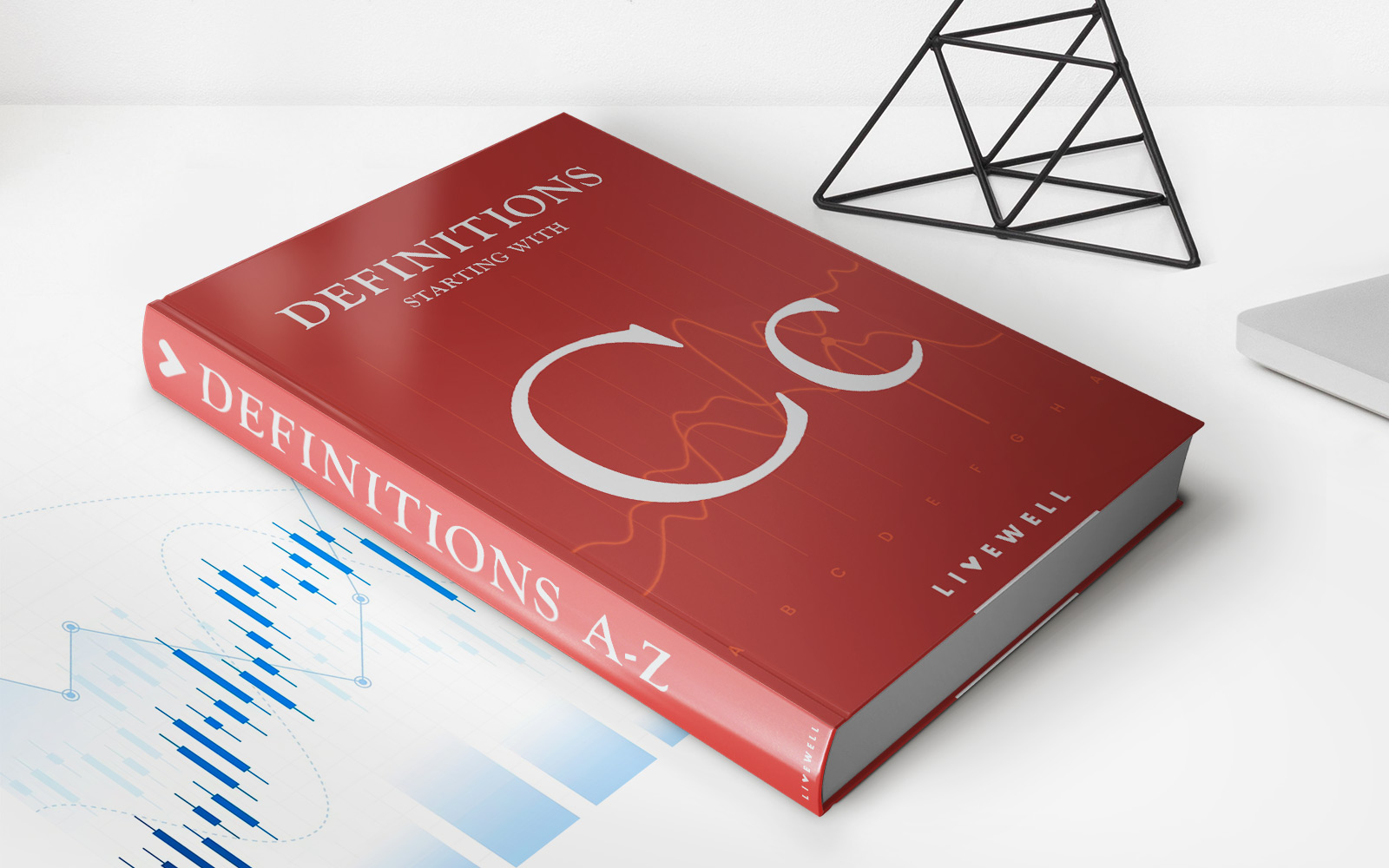Home>Finance>What Percentage Of Revolving Credit Should I Have


Finance
What Percentage Of Revolving Credit Should I Have
Modified: March 6, 2024
Learn the ideal percentage of revolving credit to maintain for optimal financial health. Get expert advice on managing your finances effectively.
(Many of the links in this article redirect to a specific reviewed product. Your purchase of these products through affiliate links helps to generate commission for LiveWell, at no extra cost. Learn more)
Table of Contents
Introduction
Understanding the Importance of Revolving Credit Utilization
When it comes to managing your finances, understanding the nuances of credit is crucial. One key aspect of credit management is revolving credit, which plays a significant role in determining your credit score and overall financial health. In this article, we will delve into the concept of revolving credit, explore the ideal percentage of revolving credit you should aim for, and provide valuable tips for effectively managing this type of credit.
Revolving credit refers to a type of credit that does not have a fixed number of payments, in contrast to installment credit. It allows you to borrow funds up to a certain limit and carry a balance from month to month by paying a minimum payment, with the option to pay off the entire balance or make additional purchases. Common examples of revolving credit include credit cards and lines of credit.
One crucial metric associated with revolving credit is the credit utilization ratio, which is the percentage of your available credit that you are currently using. This ratio holds substantial weight in determining your credit score, making it a pivotal factor in your overall creditworthiness. Understanding and effectively managing your revolving credit utilization is essential for maintaining a healthy credit profile and achieving your financial goals.
As we delve deeper into the world of revolving credit, we will explore the ideal percentage of revolving credit to have, factors to consider when determining this percentage, and actionable tips for effectively managing your revolving credit to optimize your financial well-being.
What is Revolving Credit?
Revolving credit is a type of credit that allows you to borrow funds up to a predetermined limit and carry a balance from month to month, with the option to make minimum payments, pay off the entire balance, or make additional purchases within the approved credit limit. Unlike installment credit, which involves borrowing a fixed amount of money and repaying it in predetermined installments over a specified period, revolving credit offers more flexibility in terms of repayment and borrowing.
Credit cards and lines of credit are common examples of revolving credit. With a credit card, you have a set credit limit, and you can make purchases up to that limit. Each month, you receive a statement reflecting your outstanding balance, and you have the option to pay the full amount, a portion of it, or the minimum payment required. The remaining balance carries over to the next billing cycle, accruing interest if not paid in full. Similarly, a line of credit provides access to funds up to a specified limit, and you can borrow and repay as needed, with interest charged on the outstanding balance.
Revolving credit offers convenience and flexibility, allowing individuals and businesses to manage their cash flow, make necessary purchases, and address unexpected expenses. However, it is essential to use revolving credit responsibly to avoid accumulating excessive debt and negatively impacting your credit score. Understanding the terms, interest rates, and repayment options associated with revolving credit is crucial for making informed financial decisions and maintaining a healthy credit profile.
By leveraging revolving credit wisely, individuals can build a positive credit history, demonstrate responsible financial behavior, and access funds when needed. However, mismanagement of revolving credit can lead to high levels of debt, increased interest payments, and potential credit score repercussions. As we explore the ideal percentage of revolving credit to have and strategies for effective management, it is essential to grasp the fundamental concepts and implications of revolving credit to make informed and prudent financial choices.
Understanding Your Credit Utilization Ratio
Your credit utilization ratio is a critical metric that reflects the percentage of your available revolving credit that you are currently using. This ratio holds substantial weight in the calculation of your credit score and is a key indicator of your credit management habits. Lenders and credit scoring models consider your credit utilization ratio to assess how responsibly you manage your available credit and whether you are likely to take on excessive debt.
To calculate your credit utilization ratio, you can divide the total amount of revolving credit you are currently using by the total amount of revolving credit available to you. For example, if you have a credit card with a $5,000 limit and your current balance is $1,000, your credit utilization ratio would be 20% ($1,000 ÷ $5,000 = 0.20, or 20%). Maintaining a low credit utilization ratio, typically below 30%, is generally advisable for preserving a positive credit score.
A lower credit utilization ratio signals to creditors that you are effectively managing your available credit and are not overly reliant on borrowed funds. Conversely, a high credit utilization ratio may indicate financial strain or a higher likelihood of default, potentially leading to a negative impact on your credit score. It is important to note that even if you pay off your balance in full each month, the balance reported to the credit bureaus may not always reflect this, as it could be reported before your payment is processed.
Regularly monitoring your credit utilization ratio and aiming to keep it low can contribute to a positive credit profile and demonstrate responsible financial behavior. By understanding the significance of this ratio and actively managing it, you can work towards optimizing your credit score and enhancing your financial well-being.
The Ideal Percentage of Revolving Credit
While there is no one-size-fits-all answer to the ideal percentage of revolving credit to have, maintaining a low credit utilization ratio is generally advisable for preserving a positive credit score and demonstrating responsible credit management. Financial experts often recommend aiming for a credit utilization ratio below 30% to optimize your credit profile. This means using only 30% or less of your available revolving credit at any given time.
By keeping your credit utilization ratio low, you signal to creditors that you are not overly reliant on borrowed funds and are effectively managing your available credit. This responsible credit behavior can contribute to a positive credit history and potentially lead to more favorable terms when seeking new credit or loans. Moreover, a low credit utilization ratio can help minimize the risk of accumulating excessive debt and the associated financial strain.
It is important to note that while a lower credit utilization ratio is generally advisable, utilizing a small percentage of your available credit, such as 10% or less, can further enhance your credit profile. This demonstrates a conservative approach to credit usage and may positively influence your credit score and the perception of your creditworthiness.
Understanding and actively managing your credit utilization ratio can empower you to make informed decisions regarding your revolving credit usage. By aiming to keep your credit utilization ratio at an optimal level, you can work towards maintaining a healthy credit score and enhancing your overall financial well-being.
Factors to Consider When Determining Your Revolving Credit Percentage
When evaluating the ideal percentage of revolving credit to utilize, several factors come into play, influencing the optimal level of credit usage for individual financial circumstances. Understanding these factors can guide individuals in effectively managing their revolving credit and maintaining a healthy credit profile:
- Credit Score Impact: Your credit utilization ratio significantly impacts your credit score. Aim to keep this ratio low, ideally below 30%, to demonstrate responsible credit management and preserve a positive credit score.
- Financial Goals: Consider your short-term and long-term financial objectives. If you plan to apply for a major loan or mortgage in the near future, maintaining a low credit utilization ratio can strengthen your creditworthiness and improve your chances of securing favorable terms.
- Debt Repayment: If you are actively working to pay down existing debts, keeping your credit utilization ratio low can support your debt reduction efforts and contribute to an improved financial outlook.
- Emergency Funds: While maintaining a low credit utilization ratio is advisable, having access to available credit for unexpected expenses or emergencies can provide a valuable financial safety net. Balancing the need for available credit with responsible usage is essential.
- Interest Costs: Higher credit utilization can lead to increased interest costs, as carrying larger balances accrues more interest over time. Managing your credit utilization can help minimize interest payments and reduce the overall cost of borrowing.
- Spending Habits: Assess your spending patterns and financial discipline. Understanding your ability to manage credit responsibly and avoid excessive spending can guide you in determining an appropriate revolving credit percentage.
By carefully considering these factors and evaluating your individual financial situation, you can make informed decisions regarding the percentage of revolving credit to utilize. Striking a balance between leveraging available credit for practical needs and maintaining a low credit utilization ratio is key to effectively managing your revolving credit and promoting long-term financial stability.
Tips for Managing Your Revolving Credit
Effectively managing your revolving credit is essential for maintaining a healthy credit profile and optimizing your financial well-being. Consider implementing the following tips to responsibly utilize and manage your revolving credit:
- Regularly Monitor Your Credit Utilization: Keep a close eye on your credit utilization ratio and aim to keep it below 30% to demonstrate responsible credit management.
- Pay Your Balances in Full: Whenever possible, strive to pay off your revolving credit balances in full each month to avoid accruing interest and maintain a low credit utilization ratio.
- Avoid Maxing Out Your Credit Limits: Resist the temptation to max out your credit cards or lines of credit, as this can significantly impact your credit utilization ratio and potentially harm your credit score.
- Set Up Payment Reminders: Missing payments can lead to late fees and negatively affect your credit score. Consider setting up payment reminders or automatic payments to ensure timely repayment of your credit balances.
- Strategically Manage Multiple Accounts: If you have multiple credit accounts, distribute your credit utilization across them to maintain a balanced ratio and avoid overutilization of a single account.
- Review Your Credit Reports Regularly: Monitor your credit reports for accuracy and address any discrepancies or errors that could impact your credit utilization and overall creditworthiness.
- Be Mindful of New Credit Applications: Limit the frequency of new credit applications, as each application can result in a hard inquiry on your credit report, potentially impacting your score.
- Seek Credit Limit Increases Wisely: Requesting a higher credit limit can lower your credit utilization ratio, but exercise caution to avoid the temptation of increased spending and potential financial strain.
- Utilize Credit Responsibly: Use your revolving credit for essential purchases and expenses, and avoid unnecessary or impulsive spending that could lead to high balances and increased credit utilization.
By incorporating these proactive strategies into your financial management approach, you can effectively navigate the realm of revolving credit, maintain a healthy credit utilization ratio, and work towards achieving your long-term financial objectives.
Conclusion
Understanding the dynamics of revolving credit and its impact on your financial well-being is paramount for sound credit management. Your credit utilization ratio, a key component of revolving credit, holds significant influence over your credit score and overall creditworthiness. By aiming to maintain a low credit utilization ratio, typically below 30%, you can demonstrate responsible credit usage and enhance your financial standing.
While there is no definitive percentage of revolving credit that applies universally, striving to keep your credit utilization ratio low can yield favorable outcomes, including a positive credit score, improved access to credit, and minimized interest costs. Factors such as your financial goals, debt repayment strategies, and spending habits should be carefully considered when determining the appropriate level of revolving credit to utilize.
By implementing prudent credit management practices, such as paying balances in full, monitoring your credit utilization, and strategically managing multiple credit accounts, you can navigate the realm of revolving credit with confidence and foresight. Regularly reviewing your credit reports, staying mindful of new credit applications, and utilizing credit responsibly are integral components of maintaining a healthy credit profile.
Ultimately, managing your revolving credit effectively involves a balanced approach that aligns with your financial objectives and promotes responsible credit behavior. By integrating the tips and insights outlined in this article into your financial strategy, you can optimize your credit utilization, bolster your creditworthiness, and pave the way for a secure financial future.














